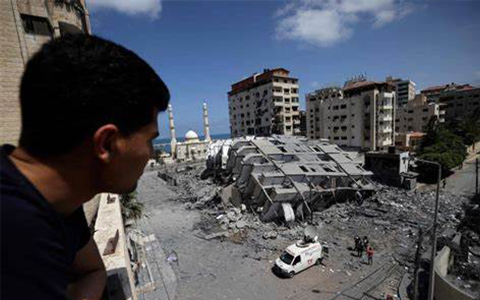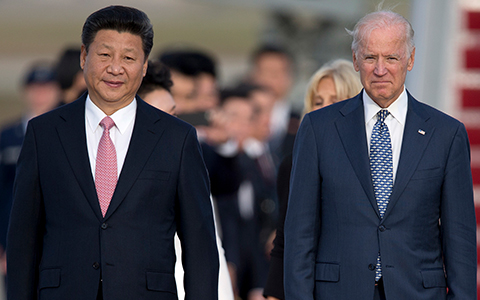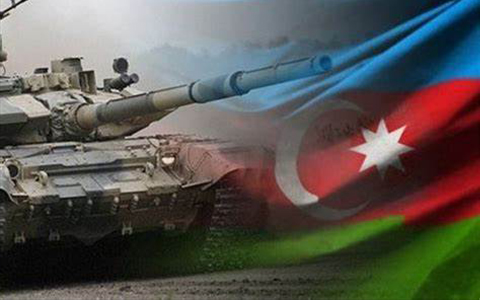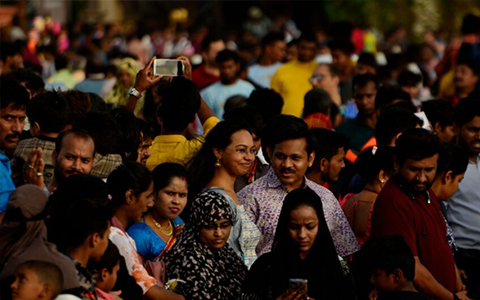
发布时间:2024-01-08
2023年全球大事盘点
导读
在过去的2023年,全球地区战争和局部冲突仍是主旋律,中美关系也并未出现实质性好转,而越来越频繁出现的极端天气也令人类对环境持续担忧。通胀、利率上升、劳动力市场紧缩和地缘政治摩擦,冲击了对全球经济的乐观预测并带来巨大不确定性。伴随着2024年新年钟声响起,让我们祈愿新的一年能给我们带来一些令人振奋的消息。
本文根据Council on Foreign Relations网站文章编译,原作者为James M. Lindsay。
全球气温打破史上最高记录
气候变化早已不再是远在天边的论调,而是近在眼前的现实。2023年是史上最热的一年:全球气温创12.5万年来新高,逼近2015年巴黎协定所规定的2摄氏度上限;极端天气事件频发,从史无前例的野火、极端干旱到创纪录的洪水,不一而足。风能、太阳能、氢能及其它清洁能源及环保技术的新进展似乎给国际社会带来一丝曙光,但其大规模推广的速度和范围仍令人存疑。我们不禁发问:人类是否已在全球灾难性气候变化的路上一去不复返?
哈马斯袭击以色列
早在2023年9月下旬,中东局势仍一片乐观:《亚伯拉罕协议》搭建起了以色列与阿拉伯国家的和平桥梁;沙以建交之说纷纭而起,也门内战也偃旗息鼓。10月7日,哈马斯对以色列发起猛烈袭击,彻底粉碎了这一和平幻象。该日的伤亡人数创造了以色列史上的记录,约1200人丧生,240人被扣为人质。以色列发誓要铲除哈马斯,对加沙发动空袭并入侵加沙北部,在短暂停战后再度进军加沙南部。巴勒斯坦平民死亡人数与日飙升,且多为妇女儿童。这一冲突何时才能结束?将以何种方式收场?这些问题悬而未决,如同巨大的阴影笼罩在中东和世界上空。

乌克兰反击:代价沉重,收效甚微
2023年初,国际社会对乌克兰的反攻寄予厚望,希望以此打破俄罗斯对东乌及克里米亚的控制。这场众望所归的反攻于6月初拉开帷幕。尽管重创俄军,但战线几乎没有移动。11月初,乌克兰最高将领称战斗已陷入"僵局",并承认很可能不会有重大突破。舆论重心很快从乌克兰能否赢得战争转向其能否维持战争——在这样一场旷日持久的消耗战中,俄罗斯凭借其经济与人口体量似乎更具胜算。在欧洲经济饱受战争影响的同时,"乌克兰疲劳症"也开始在西方出现,反对继续支援乌军的声音相继出现。国际社会呼声日益高涨,要求乌克兰由攻转守并寻求停火,但俄总统普京是否会同意停火仍有待商榷。
中美紧张局势持续升温
2023年伊始,中美紧张局势似乎有所缓和。此前的11月,双方最高领导人在巴厘岛G20峰会期间举行了富有成效的会晤。美国国务卿安东尼·布林肯定于2月访问北京,讨论为两国日益紧张的地缘政治竞争设置 "防护栏"。然而,"气球事件"的发生激化了紧张局势,致使此次访问延期至6月。尽管双方举行了“建设性”会谈,但并未阻止美方持续向对华贸易施加限制。拜登和习近平于11月在旧金山举行的2023年亚太经合组织领导人论坛期间会晤。会谈达成了一些小协议,但无重大突破。年关将至,世界上最强大的两个国家仍未在和平共处的道路上携起手来。

AI:悬在人类头顶的达摩克利斯之剑
基于大语言模型的ChatGPT-4的发布,将人工智能带入了公众视野的中心。在政府、企业和个人纷纷摩拳擦掌,试图驾驭其巨大潜力的同时,激烈的争论也一触即发:AI究竟是开启了人类创造力和繁荣的新时代,还是打开了潘多拉魔盒,带来噩梦般的未来?乐观者指出,AI正以前所未有的速度催化各领域的重大突破;悲观者则警告说,AI发展的速度超过了人类应对其风险的能力,无论是造成大规模失业、加剧现有的社会不平等,还是引发人类灭绝。人工智能的先驱之一杰弗里·辛顿辞去了在谷歌的工作,马斯克等科技领袖签署公开信,警告人们AI的深远风险。这一技术将如何塑造人类社会尚未可知,但目前来看,各国政府不管在利用技术优势还是预防技术风险上,似乎都稍显迟钝。

阿塞拜疆夺取纳戈尔诺-卡拉巴赫地区
2023年9月, 阿塞拜疆出兵夺取纳戈尔诺-卡拉巴赫地区。该地区在苏联解体后置于阿塞拜疆的直接统治下,但由于当地居住人口绝大多数为亚美尼亚族人,致使阿塞拜疆与亚美尼亚两国冲突不断。在 2020年9月的一次交火后,俄罗斯通过谈判达成停火,并使阿塞拜疆控制了纳戈尔诺-卡拉巴赫的大部分地区。紧张局势一直持续到 2023年9月,阿塞拜疆再次发动进攻,在几天之内就占领了先前尚未控制的领土,并宣布将开始飞地的 "重新整合"。一周之内,十多万亚美尼亚人逃往亚美尼亚。该地区剩余亚美尼亚人的安全问题将成为两国之间的一个持续热点。

印度超越中国成为世界第一人口大国
自上世纪甚至更早以来,中国一直是世界上人口最多的国家。这一地位在2023 年被印度取代。据估计,印度人口为14.3亿,并在未来几十年内将继续保持人口第一的地位。中国目前正面临着人口萎缩和人口老龄化的双重困境。据人口学家预测,到本世纪中叶,中国人口将减少1亿,中位年龄将从39岁上升到51岁;而印度的人口则将达到近17亿,中位年龄达到39岁。虽然人口结构并非决定性因素,但它确实制约着国家发展,也提供着巨大机遇。人口结构偏年轻并保持高增长的国家,劳动力往往更具活力,消费水平更高,经济增长也因此更为强劲。

太空竞赛白热化
太空已成为政府与企业竞相征服的宝地。迄今为止,全球7个国家已设航天局,16个国家已具备向太空发射有效载荷的能力。人们对探索月球尤为着迷——今年8 月,俄罗斯的登月计划以失败告终;几天后,印度成为第4个在月球上着陆无人飞行器和第1个在月球南极附近着陆的国家。两周后,印度又启动了一项研究太阳的计划。中美两国也都有雄心勃勃的登月计划,美国国家航空航天局(NASA)有望到2025年让宇航员重返月球。但在太空竞赛如火如荼开展的同时,关于太空军事化的风险、太空相关法规的缺乏以及太空垃圾问题等也令人隐隐担忧。

全球多国政局动荡
2023年是全球政局动荡不安的一年。政变如同瘟疫蔓延非洲大陆。7月,尼日尔军方推翻民选总统,并对试图干预的邻国威胁以战争;8月,加蓬军方掌权,对于举行选举含糊其辞。新进步党派在泰国5月的选举中赢得多数席位,却因一场幕后交易被排除在政府要职之外。极右翼政党在欧洲当权,重唤起人们对上世纪欧洲民主崩溃的惨痛记忆。危地马拉总检察长试图阻止该国当选总统就职,而秘鲁总检察长则利用反腐调查施压立法者,以此协助盟友……总体来说,今年并不算是一个太平年。
世界经济:阴霾中不乏曙光
2023见证了全球经济又一个动荡之年:通胀、利率上升、劳动力市场紧缩和地缘政治摩擦冲击了乐观预测并带来巨大不确定性。全球央行在2022年和2023年拉高利率以应对飙升的通胀率,同时试图在保持增长间取得平衡;就业市场趋紧,伴随人工智能的影响,给诸多经济体带来挑战,并提出对劳动力技能的新标准;3月份硅谷银行的倒闭成为美国历史上排名第三的银行倒闭事件,给美国及以外的银行业市场带来冲击……但阴霾之中也不乏曙光,全球股市仍在2023年完成了20%的增长。专家预测2024年的劳动力市场有望回归常态,通胀态势亦有望平息;但经济增速放缓,且地缘政治仍将成为影响全球经济稳定的危险因素。总之,在动荡不安、难以预测的一年过去之后,未来一年的前景仍不明朗。
Ten Major Events that Defined 2023
Global temperatures shatter records
Climate change is no longer a future threat. It is the world’s new reality. Two thousand twenty-three is likely the hottest year on record. Global temperatures have not been this high in 125,000 years, and they are poised to blow past the 2-degree-Celsius limit enshrined in the 2015 Paris Agreement. The result has been extreme weather events around the globe, ranging from historic wildfires to extreme drought to record flooding. Recent development in wind and solar power, use of hydrogen, and various other environmental technologies offers hope yet serious doubts remain about how fast and how widely such technologies can be scaled up. We can’t help but ask: did humanity miss the chance to avoid catastrophic climate change?
Hamas attacks Israel
The Middle East looked promising in late September 2023. The Abraham Accords were deepening ties between Israel and Arab countries. Speculation abounded that Saudi Arabia might soon establish diplomatic relations with Israel. A ceasefire in Yemen’s bitter civil war was holding.However, a drastic change of picture appeared when Hamas attacked Israel on Oct. 7th. Roughly 1,200 Israelis were killed, the deadliest day in Israel’s history. Some 240 people were taken hostage. Vowing to eradicate Hamas, Israel launched airstrikes against Gaza and then invaded northern Gaza and soon southern Gaza after a short-lasting pause. Death toll continues to soar for Palestinian civilians, mostly women and children, drawing accusations of war crimes for Israel which it denied. How the conflict will end, what will follow it and how it will affect the Middle East remain open questions that loom above the region and the world.
Ukraine’s counteroffensive gains little ground at a heavy cost
Hopes were high early in 2023 that a Ukrainian counteroffensive might break Russia’s hold on eastern Ukraine and possibly Crimea. The much-awaited counteroffensive began in early June. Despite inflicting massive losses on Russian troops, the battlelines barely moved. In early November, Ukraine’s top general described the fighting as a “stalemate” and admitted that “there will most likely be no deep and beautiful breakthrough.” Diplomatic conversations quickly turned to whether Ukraine could sustain, let alone win, a war of attrition that seemed to favor Russia given its substantially larger economy and population. Despite suffering horrific losses, Russia had double the number of troops in Ukraine in fall 2023 compared to the start of the invasion and the Russian economy was on a war footing. Meanwhile, “Ukraine fatigue” had begun to emerge in the West, especially in the United States as Republican lawmakers balked at sending Kyiv more aid. With long-term trends potentially favoring Russia, calls grew for Ukraine to pivot from offense to defense and to seek a ceasefire. Whether Russian President Vladimir Putin would agree to halt the fighting is still debatable, as he likely believes that time is on his side.
U.S.- China tensions continue to simmer
As 2023 began, U.S.-China tensions seemed to be easing. The prior November, top leaders from both sides had a productive meeting on the margins of the G-20 summit in Bali. The U.S. Secretary of State Antony Blinken was set to visit Beijing in February to discuss putting “guardrails” on the two countries’ increasingly tense geopolitical rivalry. Yet the “air-balloon incident” inflamed political tensions which prompted Blinken to postpone his visit to Beijing. Blinken finally travelled to Beijing in June for “constructive” talks, yet those conversations did not stop Washington from imposing additional restrictions on trade with China or persuade Beijing to ease off its guard against the U.S. Biden and Xi met in November on the sidelines of the 2023 APEC Leaders’ Forum in San Francisco. The talks produced a few minor agreements but no major breakthroughs. Agreement on a modus vivendi continues to elude the world’s two most powerful countries.
AI offers promise and peril
AI burst into the public consciousnessthis year with the release of the lasts version of ChatGPT, reportedly ten times more advanced than its predecessor. Governments, companies, and individuals moved quickly to exploit its potential. That triggered heated debates over whether AI is unleashing a new era of human creativity and prosperity, or opening a Pandora’s box that will produce a nightmarish future. Optimists pointed to how AI was unleashing scientific breakthroughs at an unprecedented pace across a range of fields, while pessimists warned that the technology is developing faster than the ability of humans to assess and mitigate the harm it might cause, whether that is creating mass unemployment, hardening existing societal inequalities, or triggering humanity’s extinction. Geoffrey Hinton, one of the pioneers of AI, quit his job at Google, and technology leaders like Elon Musk signed an open letter, all to warn of AI’s profound risk. How the powerful technology will shape human society remains unknown, yet what’s sure is that governments seem not to be moving fast enough to harness the benefits of AI and contain its risks.
Azerbaijan seizes Nagorno-Karabakh
In September 2023, Azerbaijan attacked and seized Nagorno-Karabakh. The region was placed under the ruling of Azerbaijan after the collapse of the Soviet Union, yet it was populated almost entirely by ethnic Armenians uninterested in being governed by Baku. Armenia and Azerbaijan have been at long dispute over the region ever since. After one of the recent crossfires in September 2020, Russia negotiated a ceasefire that left Azerbaijan in control of much of Nagorno-Karabakh. Tensions kept building up until September 2023 where Azerbaijan attacked again. Within days, it overran the territory it did not already control and announced it would begin the enclave’s “reintegration.” Within one week, more than one hundred thousand Armenians, or roughly 85 percent of the population of Nagorno-Karabakh, fled to Armenia. The safety of the remaining Armenians in Nagorno-Karabakh could be a continuing flashpoint between Armenia and Azerbaijan.
India passes China as the world’s most populous country
For the last century, if not longer, China has had the world’s largest population. That ended in 2023. India now does. Its population is estimated to be 1.43 billion people. India will likely remain the most populous country for decades to come. China’s population is both shrinking and aging. Demographers project that the Chinese population will fall by 100 million people by mid-century, or more than the population of all but fifteen countries in the world today. Over the same time period, China’s median age will rise from thirty-nine years-old to fifty-one. India’s population, meanwhile, should reach nearly 1.7 billion by mid-century with a median age of thirty-nine. While demography isn’t destiny, it does constrain and enable every country’s opportunities. Countries with younger, growing populations tend to have more vibrant workforces that consume more, and as a result, enjoy higher economic growth rates.
Space race heats up
Space is now a hot destination for both governments and companies. Seven countries have space agencies; sixteen countries can launch payloads into space. The moon has been of particular interest. Russia’s moon effort ended in disappointment in August when its lander crashed into the moon’s surface. Days later, India became the fourth country to land an unmanned vehicle on the moon, and the first to do so near the moon’s south polar region. Two weeks later, India launched a mission to study the sun. China and the United States also have ambitious moon programs, with NASA aiming to return astronauts to the moon by 2025. These hot space competitions also raise questions such as militarization of space, lack of rules governing space operations and space junks created from current practices.
Political turbulence across the globe
2023saw waves of political turbulence across the globe. Africa’s coup epidemic continued. In July, Niger’s military ousted the country’s democratically-elected president. Neighboring states threatened to intervene if the coup wasn’t reversed, but the military juntas running Mali and Burkina Faso threatened war in response. In August, Gabon’s military took power and made vague promises to eventually hold elections. A new progressive party won the most seats in Thailand’s May election. However, a backroom deal produced a pro-military government that left the election’s biggest winner on the outside looking in. Far-right parties fared well across Europe, reviving memories of how European democracies collapsed a century ago. Guatemala’s attorney general tried to keep the country’s president-elect from taking office, while Peru’s attorney general used corruption investigations to pressure lawmakers to help her allies. All in all, not a peaceful year in the political arena.
Global economy: bloom shoots amidst the gloom
2023 has been turbulent for the global economy; as inflation, rising interest rates, tight labour markets and geopolitical shocks have hit forecasts and caused uncertainty. Central banks around the world increased interest rates across 2022 and 2023 to deal with spiking inflation while attempting to balance this with a need to maintain growth. Tightening of job market together with impact of AI posed concerns in many economies as well as new standards for expected labour skills. The March Silicon Valley Bank collapse, the third-largest banking failure in US history, sent shockwaves through US banking markets and beyond… Yet the silver lining began to show at the end of the year with cooling inflation trends as well as the normalization of labour market. Global stock market showed a remarkable 20%. Outlook for 2024 entails a decelerating growth rate while geopolitical tensions remain a major factor undermining economic stability. All in all, as a volatile and unpredictable year passed by, what lies in the year ahead remains uncertain.
本文转载自瑞士雷梭勒家族办公室,如有侵权,敬请告知删除。
Sooswiss为您提供
瑞士方向私人管家式的定制服务:
1)家族传承 2)财富管理 3)投资咨询
4)企业服务 5)居留计划 6)国际教育
更多资讯请登录网站 www.sooswiss.com
